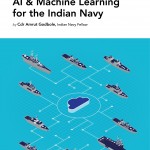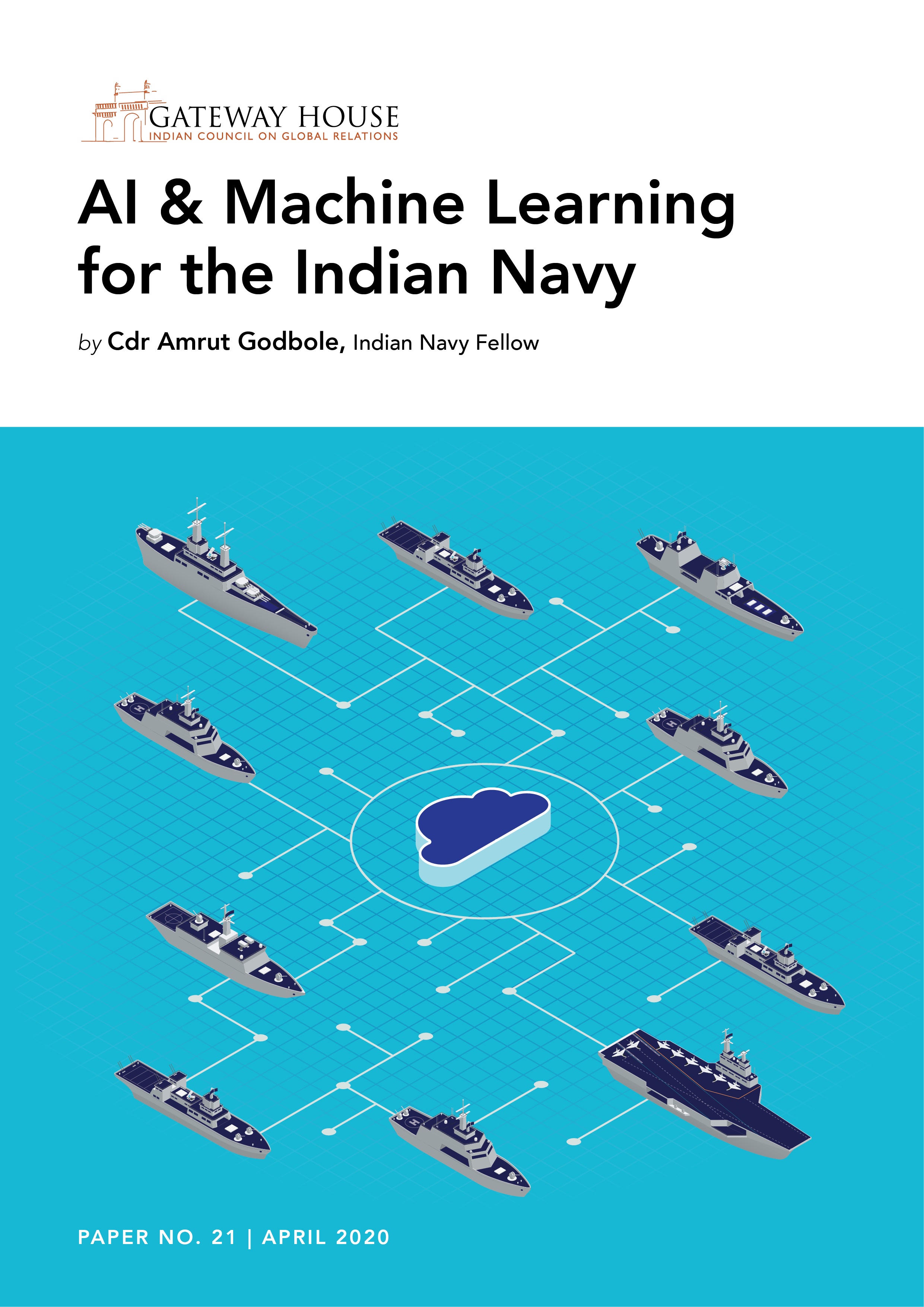Executive Summary
The Indian Navy is a technology-savvy force. The new-generation platforms that it operates are equipped with cutting-edge technology. This puts it in an advantageous position to develop and absorb new AI technologies that are becoming increasingly popular with the military and industry. The Government of India has already taken concrete steps in this direction. In 2018, having identified the potential impact of Artificial Intelligence (AI)/ Machine Learning (ML) across sectors, it entrusted NITI Aayog and the Ministry of Defence with the task of establishing a roadmap for devising a national programme, aimed at research and development (R&D) of AI applications in the social sector and armed forces respectively. Consequently, in June 2018, NITI Aayog published a white paper, titled National Strategy for AI, while the task force, set up by the Ministry of Defence, called Strategic Implementation of AI for National Security and Defence, submitted its recommendations. The task force identified Use Cases that are of strategic value, but involve prolonged R&D cycles. The long-term goals of the Indian Navy of transforming to a 200-ship force by 2027 and its continued impetus to maintain optimal combat capability, are repeatedly put to test by diminishing capital availability and shortages in manpower. It is therefore imperative that the armed forces, and more so, the Indian Navy, look to leverage the benefits of AI/ML-based technologies for improving organisational efficiencies at various levels.
This paper focuses on four additional Use Cases, viz., Inventory Management, Training, Prescriptive Maintenance, and Security & Surveillance, for implementation in the Indian Navy. The additional Use Cases identified are based on established industry capability and thus have shorter R&D cycles. These solutions, once demonstrated, can easily be scaled up to the other two forces. Industry participation in aiding skill development and delivery of Proof of Concept will be critical for the emergence of commercially viable and sustainable technologies.
A cohesive tri-services approach will be necessary to maintain inter-operability and optimal utilisation of scarce resources in developing scalable AI/ML solutions. The Department of Military Affairs (DMA), headed by the Chief of Defence Staff (CDS), can initiate the development of a common tri-services strategy and interoperable infrastructure. The inclusion of the CDS and suitable representatives from the DMA in the Defence Al Council (DAIC) and the Defence Al Project Agency (DAIPA) respectively will contribute significantly to framing a synergistic approach to the absorption of AI-based technologies.
AI Use Cases identified in this paper have commercial applications too. The development of these AI technologies in collaboration with industry and academia will help reverse the current trend in industry circles of first developing technology for commercial use and then suitably modifying it for military applications.
You can download the PDF version of this paper here.
Cdr. Amrut Godbole is a serving officer of the Indian Navy and currently Indian Navy Fellow, Gateway House.
The views expressed in this report/article are those of the author and do not necessarily reflect the official policy or position of the Indian Navy, the Ministry of Defense, or India.
This paper was exclusively written by Gateway House: Indian Council on Global Relations. You can read exclusive content here.
For interview requests with the author, please contact outreach@gatewayhouse.in.
© Copyright 2020 Gateway House: Indian Council on Global Relations. All rights reserved. Any unauthorized copying or reproduction is strictly prohibited.



